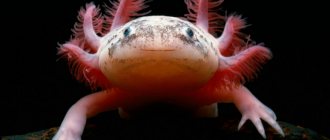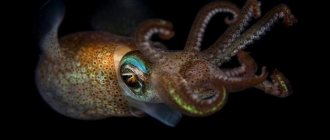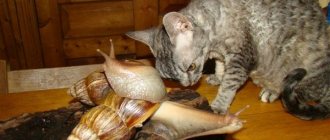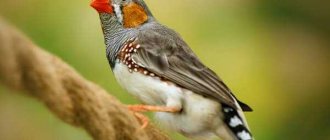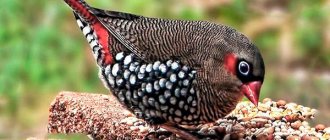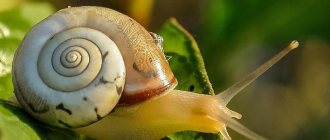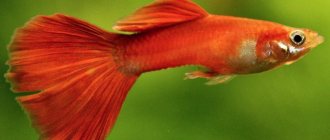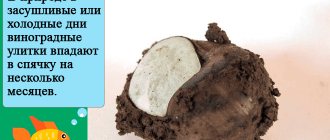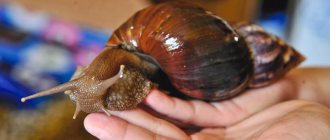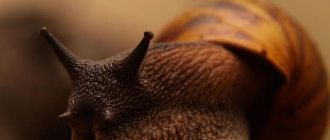The axolotl is a small amphibian belonging to the family Ambystomidae from the order Caudate. The animal has an amazing ability to regenerate, restoring not only the lost tail, limbs or external gills, but also partially damaged internal organs.
The ability to restore almost any type of cell and stable immunity have caused close attention from scientists. Currently, amphibians, along with rodents and rabbits, are the most popular laboratory animals for scientific and medical research. In addition, histological preparations from the liver of an amphibian are used to study animal cells: they are quite large in size, which makes it possible to clearly examine all the structural components even at low magnification. Cytology and histology courses at universities necessarily include laboratory classes, during which the structure of the cell is studied and pigment, secretory and fatty inclusions in the liver cells of the axolotl are determined.
AXOLOTL AND AMBYSTOMA
Ambystoma - axolotl - ambistoma
M. Zatravkin Moscow Regional Pedagogical Institute named after. N. K. Krupskaya Department of Zoology
One of the first Spanish travelers said: “Near the city of Mexico in the lakes there live fish with soft skin and four legs, similar to the legs of a lizard; these fish are about a cubit long and an inch thick. They are called axolotls . This animal. amazes with its unusual and strange appearance. Its meat is similar to eel meat, healthy and tasty, it is eaten fried, boiled and baked.” Who is an axolotl? What kind of animal is that? The answer will probably surprise many. It turns out that this is the larva of the amphibian animal Ambystoma . But if the axolotl is well known to aquarists, few people know the adult animal, the ambistoma.
Ambystoma belongs to the order of tailed amphibians (Urodela, or Caudata). The family Ambystomatidae includes 5 genera, 28 species. Originates from North and Central America. The axolotl appeared in Russia back in the last century and by the end of it was widespread among aquarists.
The body is long and thick, like a newt. The head is very flat, the muzzle is flattened, the mouth is wide. On both sides of the head there are three tufts of hairy gills. A translucent straight ridge stretches along the body. The axolotl has two pairs of legs, the front legs have four toes and the back legs have five. It feels good in an aquarium (this was noted by Zolotnitsky), requires almost no care and can live even in muddy water containing little oxygen.
Photo of axolotl
From time to time it rises to the surface of the water for air, although it can do without it and breathe oxygen dissolved in the water. In an aquarium, the axolotl prefers to retire to dark corners, leads a sedentary lifestyle, and can stand in one place for hours without moving at all. It gets used to people quickly and sometimes takes food directly from people's hands. Axolotls are fed with large bloodworms, pieces of raw meat and fish, earthworms, mollusks, and insects.
Animals are very voracious and often try to swallow more food than fits in their throats. They regurgitate unswallowed food. Hungry axolotls can attack small fish, newts, and tadpoles (the latter can be used as food in the spring). It happens that they eat off each other’s gills, tails, paws (all eaten body parts quickly regenerate), or even even attempt to kill their fellow creatures. Axolotl reproduction was first observed in 1865. at the Paris Botanical Garden.
It usually occurs in April-May. Fertilization in axolotls is internal. The female captures the spermatophore laid by the male with her cloaca, and then lays fertilized eggs in several stages - 20-30 pieces each, up to 500 eggs in total. During this period she is very restless. The male is slow and lazy.
Reproduction can also be induced artificially at any time of the year. To do this, you need to keep the axolotls for 2-3 months in an aquarium without soil and plants, with some lack of oxygen, and then transfer them to good conditions. In an aquarium where axolotls breed, plants and stones are needed, to which the female glues eggs - large (up to 4.2-5 mm in diameter), transparent, with a black dot of the embryo. They should be removed from the aquarium immediately, otherwise they will become prey for the males and will be completely destroyed.
It is recommended to keep fertilized eggs in a 20-liter aquarium along with plants placed on the bottom. Zolotnitsky (1890) advises incubating them on a baking sheet filled with water and covered with glass on top; there should be plants in the water, mainly elodea. The optimal temperature is 18−20°C. The water should be changed once every 3-4 days. Eggs must be periodically inspected and dead (clouded) eggs must be removed. It is not necessary to remove dead eggs in an aquarium. The incubation period lasts 3-4 weeks. Then the shell bursts and the young larva emerges from the egg.
Its length is up to 25mm. It is equipped with gills, but there are no legs yet. The hind legs appear after 1-2 weeks, the front legs only after 3-4 months. The body of young individuals is light green in color, with black spots. The larvae must be well fed, otherwise they develop poorly and grow slowly (sometimes growth stops altogether). You can’t overfeed them either - this can lead to their death. Feeding begins with “live dust” and ciliates, then cyclops and daphnia are included in the diet (initially small, later large) and, finally, they switch to small bloodworms. Grown-up larvae can be fed in the same way as adult axolotls. The larvae usually reach their maximum size in the second year of life. Axolotls rarely turn into adult axolotls.
When transitioning to a new stage, the axolotl begins to increasingly rise to the surface of the water for air. At the same time, its gills gradually become smaller and finally disappear altogether. The leathery fin fold of the tail also disappears. The axolotl turns into an adult ambistoma and emerges from the water. An adult animal returns to the water only during the breeding season, and then returns to land. This transformation can also be carried out in captivity.
Young larvae at an age when they already have front and hind legs must be placed in such a position that they are forced to come into contact with atmospheric air. Professor Weisman first tried to do this in the last century, but he never managed to bring his idea to life. A few years later, the famous naturalist Marie de Chauvin obtained an ambistoma from an axolotl. In her experiment, part of the aquarium was filled with water so that the axolotl could only dive into it in one place. When crawling, he often had to come into contact with the surface of the water and atmospheric air. There was wet moss in the dry area of the aquarium.
Origin story
Lakes Chalco and Xochimilco, which are located in Mexico, are considered to be the homeland of axolotls.
They were found there during the reign of the Aztecs.
This is interesting
It was the Aztecs who came up with the name "axolotl"
Translated from their language it meant “river monster.” The ancient Indians ate axolotls, considering them a delicacy. But even now modern Mexicans are not averse to eating these larvae.
But in Europe, axolotls appeared in the second half of the 19th century. Most likely they were brought by one of the fishing vessels.
In 1985, the first individuals were bred in captivity in the History Museum in Paris. And soon their active spread on the European continent began.
Various types of ambisto larvae have been bred, including the golden axolotl, harlequin, albino axolotl, and white axolotl.
Moreover, the latter two are often confused with each other due to identical skin color. Only albinos have white skin with a pink tint, while white axolotls have a matte white body. Albinos have red eyes, light gills with bright scarlet hairs. White axolotls have black eyes and dark gills with pink hairs.
In the XIX - early XX centuries. Ambistoma larvae, which were created in the laboratory, were used for research and experiments, but now they are used only for decorative purposes, released into home aquariums.
How to turn an axolotl into an amblystoma
Axolotl can be purchased in stores that sell aquariums, fish for aquariums, etc. Most of all, it resembles a newt, but is much larger, reaching five inches in length.
In addition, he retains gills for his entire life, which stick out in the form of bushes on the sides of his head. This animal comes from America, but in our country it breeds well in aquariums and reproduces easily. It has long been known that axolotls, under some poorly understood conditions, undergo great changes in the structure of their bodies and turn into another animal, which is also found freely in America. This other animal is called Amblystoma. This transformation consists of the fact that the axolotl’s gills disappear, as happens when a newt larva transforms into an adult state. In addition, light spots appear on his skin, and his tail turns from flat, paddle-shaped, to more or less round. Thus, it has long been known that the axolotl is nothing more than an amblystoma larva, but a larva capable of reproducing. It is remarkable that amblystoma itself cannot reproduce. Until recently, it was believed that it was difficult to force an axolotl to turn into an amblystoma in an aquarium, so those observers who succeeded in this considered it their duty to notify about this in special journals. For such a transformation, a special aquarium was set up, in which axolotls could walk onto land along the flat bottom. Recently a new method has been discovered by which every axolotl can easily be made to turn into an amblystoma. To do this, the axolotl must be fed raw thyroid gland from a bull or goat. This gland can be obtained from butchers upon request, but you can replace it with the so-called thyroidin. This is a drug prepared from the thyroid gland. It can be bought at a pharmacy. It comes in the form of a powder that should be given along with the meat. A thin slice is cut out of the meat, 0.02 to 0.05 grains of thyroidin are poured into it, this slice is wrapped and given to the axolotl, holding the entire lump with tweezers. This medication should be given once a day and no other food should be fed. In 5-6 weeks the axolotl will turn into an amblystoma. Very small axolotls, however, do not transform.
The thyroid gland is very important in the life of animals. It is believed that axolotls in aquariums do not turn into amblystoma for the reason that their thyroid gland is underdeveloped. In humans, overdevelopment of this gland causes a painful condition called goiter. It is expressed in the formation of a tumor on the neck, which sometimes reaches the size of a human head. Damage to the thyroid gland causes a disease in humans called myxedema. It is expressed in mucous swelling and usually ends in death.
If damage to this gland occurs in childhood, then the child becomes an idiot. And finally, this gland has some amazing property of promoting the transformation of the axolotl into an amblystoma. A painful condition caused by damage to the thymus gland (even idiocy) can be cured if the patient is transplanted with the thyroid gland of a monkey or even a goat.
If you find an error, please select a piece of text and press Ctrl+Enter.
Description of the axolotl
Mature individuals can grow up to 45 cm in length, but most often their size does not exceed 25-30 cm. The amphibian weighs about 300 grams. The animal's rounded, somewhat elongated body is covered with delicate skin. The water dragon has 4 legs, and its flat and long tail makes it an excellent swimmer. On the large, wide head, small black eyes and a wide, constantly smiling mouth stand out.
Dark axolotls are found in nature. Individuals with golden yellow, yellow-brown, black, pink or white colors are bred in aquariums. There are also albinos with red eyes.
Regeneration is the dream of humanity
Another unique feature of the pink axolotl is the ability to regrow missing body parts. Nature gave this skill to the larva so that it would not be so vulnerable. Having lost his gills or part of his tail, the smiling dinosaur grows them back in record time. It takes a little longer to grow a new paw. The main condition is that the wound does not get infected. This rarely happens in the clear waters of Mexican lakes. Ironically, aquarium axolotls are much more likely to suffer damage. Instead of quickly restoring the lost body part, they die from blood poisoning.
Features of the axolotl
Unlike most other amphibians, which can live both in water and on land, the axolotl always remains in the water. It feeds on crustaceans, insect larvae, small fish and their eggs.
These “smiling” amphibians are extremely popular both among aquarists for their cheerful appearance and unpretentiousness, and among biologists as model objects (mainly for their amazing ability to regenerate). If he loses, for example, a leg, he can easily grow it back. Even lost parts of the heart and brain can be restored! This property makes the Mexican salamander extremely interesting to scientists.
Another amazing feature of the axolotl is that while physically remaining a “child,” it becomes ready to reproduce. The secret of “eternal childhood” lies in neoteny, that is, the ability to reach sexual maturity and reproduce at the larval stage.
An axolotl can remain in the larval state throughout its life. But if unfavorable conditions suddenly arise, for example, a pond dries up, the larva moves to the next level of development, i.e. transforms into an adult ambystoma. Within a few weeks, the external gills disappear and the color and shape of the body changes.
The fact that axolotls can mature became known in 1863 in Paris, when several individuals of the Mexican salamander were released into the pond of the botanical garden. After some time, a French zoologist discovered that one of the axolotls had turned into an animal similar to a salamander. Since that time, neoteny has been the subject of close attention of scientists.
You can turn an axolotl into an ambistoma artificially by lowering the water level and increasing the amount of soil in one part of the aquarium. This will force the animal to leave the water and move to a drier environment. Another way is to inject the hormone thyroxine or add it to the amphibian’s food.
But keep in mind that introducing an axolotl into metamorphosis without the help of a herpetologist is dangerous. Such experiments most often end in the death of the larva.
Axolotl behavior
The Mexican salamander is primarily a nocturnal animal. But, adapting to living conditions, it is active during the day. Her favorite activities are to leisurely swim throughout the entire thickness of the water, feel the walls and soil with her paws, or doze under the leaves of plants. Sometimes they hang right in the water column, in the current of the filter, as if meditating. The long tail plays an important role in maintaining balance and direction of movement. The animal also eats without haste, but with great enthusiasm.
If an axolotl sees live prey, it does not immediately rush after it, but waits for the most opportune moment (usually dusk or night).
Amphibians mostly live peacefully among themselves. But if the aquarium is too cramped or overcrowded, intraspecific aggression is possible.
Keeping a Water Dragon
An adult axolotl will be comfortable in an aquarium with a volume of at least 40 liters. 3-4 water dragons will fit perfectly in a 100-liter container. The aquarium is installed in a cool room and should not be exposed to direct sunlight.
There are two things you should not do when keeping axolotls: keep your pets in close quarters and overheat the water. Elevated temperatures are detrimental to them. Under natural conditions, they live in cold mountain lakes, so the water temperature in the aquarium should be about 18-20° C.
Important: temperatures above 24° C can lead to illness and death of the amphibian. If the apartment is too warm, you will need a cooling system.
Since aquatic dragons are very sensitive to the purity of water and its oxygen saturation, filtration is necessary in the aquarium and aeration is desirable. Partial water changes should be carried out at least once a week.
Axolotls require hard water to keep them. Soft, and especially distilled, is absolutely not suitable for them. Ordinary tap water is pre-settled for several days or purified using special conditioners (for example, Avera). The pH value should be in the range from 6.5 to 8.
An amphibian's home needs soil - without it, the axolotl will not feel very comfortable. As such, it is better to use pebbles no smaller than 1.5-2 cm in size. The salamander does not particularly need live plants, but you can decorate the aquarium with artificial ones.
Compatibility with other fish
Ideally, ambystoma larvae are kept in a separate monospecies aquarium. It is very difficult to choose neighbors because:
- Most fish require higher temperatures than the axolotl;
- Small and slow fish will be eaten;
- Large predators will quickly deal with the soft, defenseless neighbor, even if he is called an aquatic dinosaur;
- Other amphibians are incompatible with the axolotl in nutrition;
- Reptiles (turtles, snakes) will most likely interfere with axolotls, and axolotls will interfere with them.
Some aquarists who had experience keeping ambyst larvae claim that the amphibians lived with them in almost a three-liter jar, easily cohabited with cichlids, and so on. Situations and the degree of adaptability to conditions are different for different representatives. But among competent aquarists, the most important principle is known: in the aquarium it is necessary to create conditions that maximally replicate the natural habitat of the inhabitants. This applies to everything: not only water parameters and bottom design, but also neighbors. Fish, amphibians, and reptiles should live in comfortable conditions, and not experience constant fear or thirst for hunting. Therefore, it is better not to populate an aquarium with axolotls even with goldfish, which are sometimes recommended.
Feeding the axolotl
The axolotl, despite its outward meekness, is a predator, and quite picky in its food. The first days of their life, the larvae feed on yolk reserves, and then move on to small crustaceans. Next they are fed with cyclops or daphnia, and later small bloodworms and tubifex are added.
Grown-up dragons happily eat beef and veal liver and meat (they should be cut into pieces and bones, tendons and fat removed from them).
Animals do not take food from the bottom. You need to move long tweezers in front of their muzzle, in which a treat is clamped. They give as much food as the water dragon will eat.
The diet is varied with earthworms, fish, crickets, tadpoles or newborn mice.
Adult axolotls are fed every other day, juveniles - daily.
Reproduction of water dragons
Axolotls reach sexual maturity at 10-12 months. By this time, males acquire a cloacal swelling at the base of the tail. In females there is no such swelling or almost no swelling.
The female lays eggs 2-3 times a year, males can be used more often. The couple is seated together in the evening and left overnight. If the partners are attractive to each other, they begin mating games. Their fertilization is internal, although there are no special copulation organs. Fertilization occurs as follows: the male places on the ground from 1 to 20 transparent gelatinous pyramids consisting of sperm, and the female, floating above them, draws them into the cloaca. After a few hours, she begins to lay eggs on the leaves of aquatic plants. There can be up to 800 eggs. The eggs hatch into larvae.
Features and habitat of ombystoma
In appearance it resembles a lizard known to many people, and in American countries it was even dubbed the mole salamander. They live in forests with high humidity, which have soft soil and thick litter.
The main part of the individuals included in the class Ambisto is located in North America, the southern part of Canada. The family of these lizards includes 33 different types of ambistomas, each of which has its own characteristics.
The most popular of them are the following:
- Tiger Ambystoma. It can reach a length of 28 centimeters, with the tail occupying about 50% of the body. There are 12 long dimples on the sides of the salamander, and the coloring is light shades of green or brown. There are yellow lines and dots throughout the body. There are four toes on the front paws, and five on the hind paws. You can find this variety of ambisto in areas located in the northern part of Mexico.
In the photo is a tiger ambystoma
In the photo there is a marble ambistoma
Ambystoma yellowspotted
Mexican Ambystoma
Pictured is the Pacific Ambystoma
Having looked at the photos of the Ambist that were listed above, you can see significant differences between them.
Ambystoma character and lifestyle
Since there are many varieties of ambistos, it is natural that each of them has its own character and way of life. Tiger ambysts prefer to sit in burrows throughout the day, and at night they go in search of food. Very nimble and timid, sensing danger, they prefer to return to the hole, even if they are left without food.
Marbled ambistomes are secretive, preferring to create burrows under fallen leaves and fallen trees. Occasionally they settle in abandoned hollows. Yellow-spotted salamanders prefer an underground lifestyle, so they can only be seen on the surface of the earth on rainy days. At the same time, these amphibians do not create housing for themselves; they use what is left after other animals.
All species of these amphibians live in burrows and prefer to hunt in the dark. This is due to the fact that they cannot tolerate excessive heat; the optimal temperature for them is 18–20 degrees, in extreme cases 24 degrees.
They have a rather specific character, because they love loneliness and do not let anyone near them. The sense of self-preservation is at a high level. If ambistomes fall into the clutches of a predator, they will not give up until the last minute, biting and scratching him. In this case, the entire struggle of the ambystoma will be accompanied by loud sounds, somewhat similar to a squeal.
Species status
These endemic animals live in nature only in Mexico, and then in extremely small numbers. In home aquariums they are distributed almost all over the world. The species is heading towards extinction due to natural conditions. The good news is that axolotls have taken root in aquariums, which means they are not in danger of becoming extinct.
For comparison, statistics: there are less than 1000 of these amphibians left in the wild. And in captivity there are more than 400 thousand. The decline in numbers is associated with human influence and changes in climate and biotope. Unfortunately, we must admit that axolotls are too fragile creatures to adapt to global changes in the environment.
Ambystoma nutrition
Ambystomas living in natural conditions feed on the following organisms:
Ambystoma larvae in natural conditions consume the following foods:
Those people who keep Ambistoma in an aquarium are recommended to feed it with the following food:
- lean meat;
- fish;
- various insects (worms, cockroaches, spiders).
An axolotl larva should be fed every day, but an adult axolotl should be fed no more than 3 times a week.

